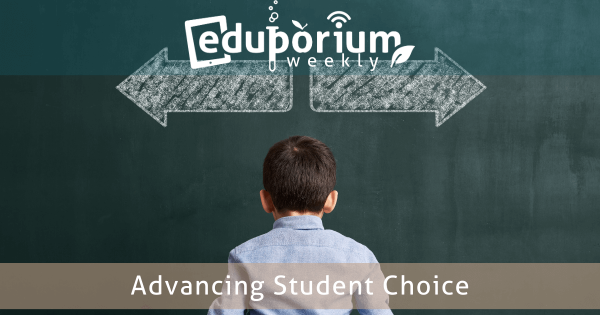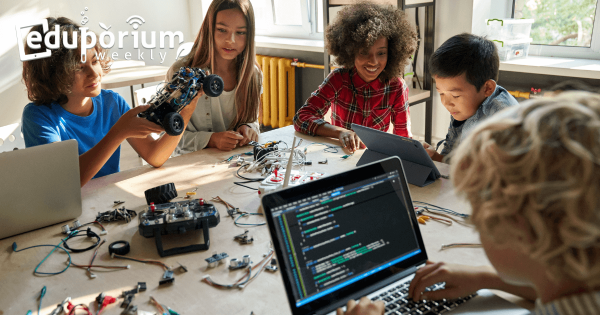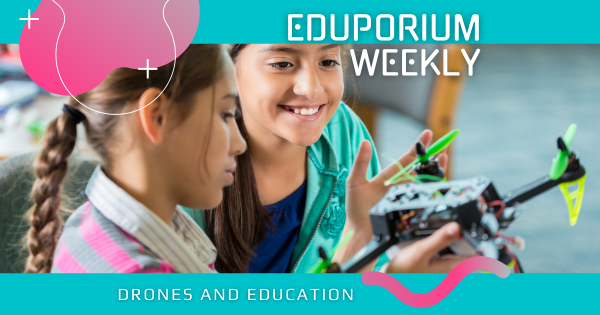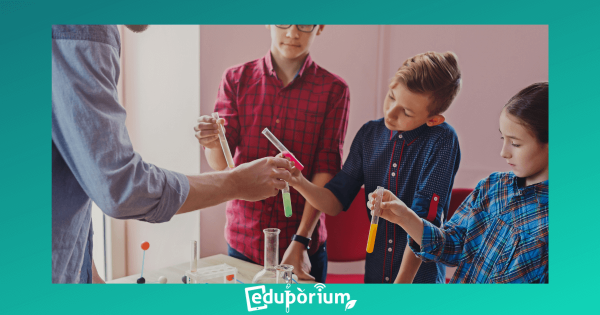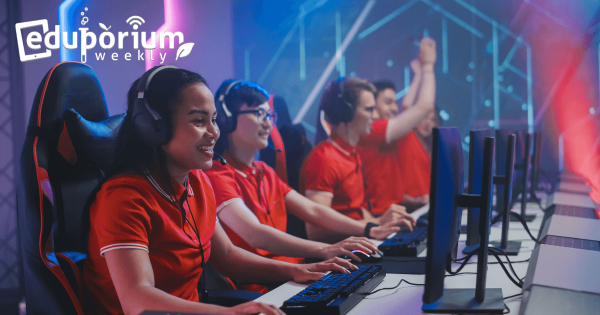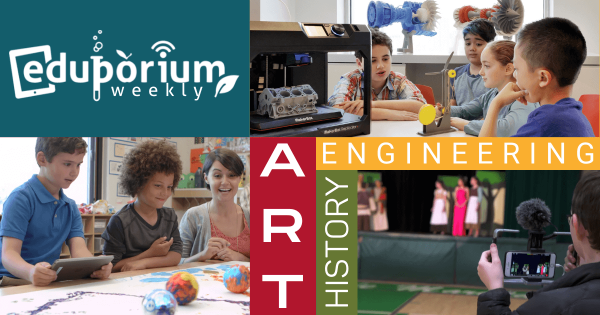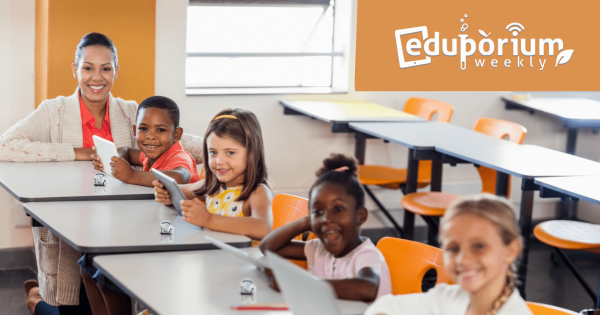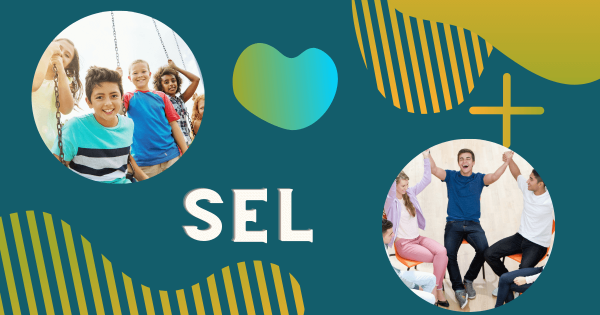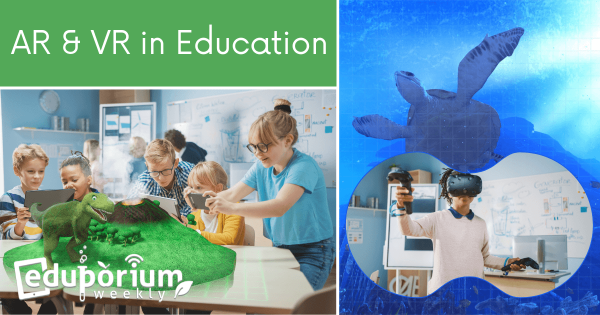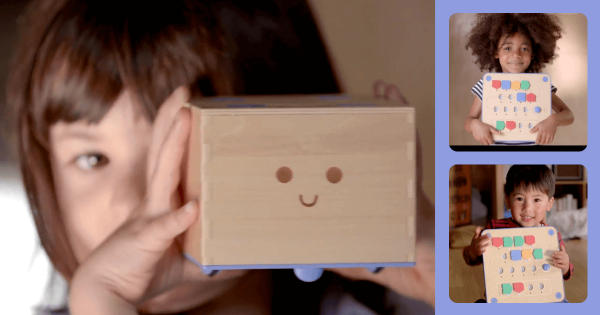Not every student learns in the same way, has the same skills as each one of their peers, or can find the appeal in all that their teachers want them to try. Age doesn’t matter because all kids have different preferences when it comes to how they learn. Some want to read until they master the content while others have
Eduporium Weekly
Our longest running current blog series, the Eduporium Weekly is your source for relevant education topics. Whether it's related to EdTech, STEM, SEL, makerspaces, soft skills, equity, CTE, or any number of other things, you are sure to find some relevant content here. Our team remains committed to providing intriguing and up-to-date opinions and perspectives on the most important topics—whether they're technology-based or not. Every week, we share our thoughts about those key topics in education. Giving educators a Saturday morning read, many of our Eduporium Weekly posts reflect recent happenings, important updates, or, sometimes, some fun revelations. We're also very fortunate to serve a community of such committed educators. For that reason, we strive to keep our thoughts and content fresh. And, this section of our blog is a great place to go for just that.
Whatever is happening in education, we believe our committed team members help educators adjust. As we've seen, technology has a place in all types of learning—as long as educators integrate it strategically. As debates and discussions in STEAM and general education evolve, we adapt this content to continually educate, inform, and entertain. Our perspective may be a bit unique but our collective expertise on these topics is always improving. We also encourage you to browse the pages or search for a topic of your interest on the left of your screen. We certainly take pride in being up to date with what teachers are experiencing. From our entire team, we hope this content truly provides you with guidance and inspiration. Check back every weekend, as well, for the latest edition of the Eduporium Weekly.
-
Eduporium Weekly | Achieving Equity In Instruction
Ideally, every classroom lesson plan and all learning experiences would be designed to foster greater equity for every student in every school building. The fact is, however, that each student is unique. Some need personalized guidance and others, in the same class, might do better with independent exploration. All, however, need school officials to keep equity in mind. -
Eduporium Weekly | Drones And Education
What started out as a cool and unique chance for students to develop key skills while trying out new technology has grown into a legitimate teaching and learning approach. Now, with applications in all sorts of today’s STEM and CTE disciplines, educators are discovering how teaching with various drones can help prepare students for the future in a variety of -
Eduporium Weekly | The Factors Driving STEM Education Today
So many factors go into how education leaders ensure students are ready for the real world and, often, it involves STEM. Factors like technology, the economy, emerging careers, and the state of the workforce each continue to affect how teachers introduce students to STEM. And, as of now, there isn’t much indication that the elements fueling STEM education will slow. -
Eduporium Weekly | Insights On Esports
The esports industry, beyond the high school and college levels, has been popularized via a number of different outlets. One of those is certainly live streaming top matches on platforms like YouTube or Twitch. And, while this excitement may seem unnecessary to casual observers, there are actually millions of people who follow these gamers, including the next generation. -
Makerspace Learning In Different Areas Of The Curriculum
You probably know by now that we are huge advocates of makerspaces in K–12 schools. The added freedom for creating, hands-on experimentation, and exploration that they provide for students helps them learn in so many new ways. Now, many educators have even gone as far as to create their own makerspace curriculum after seeing all the benefits for students. -
Eduporium Weekly | Creating A School STEM Program
While we don’t want to place too much pressure on any educators starting new STEM programs, there are some key suggestions we can provide. The first of those is to decide on and define the direction of the STEM program, including its identity, purposes, and objectives, which often means that the learning experiences should reflect real-world problem solving. -
Eduporium Weekly | SEL In The Classroom
In addition to key STEM skills that students will likely need, they are going to need strong soft skills, like communication, collaboration, and listening, too. As such, the social-emotional aspect to teaching exposes kids to the process through which they acquire and apply the knowledge, skills, and attitudes necessary for managing emotions and building relationships. -
Eduporium Weekly | AR And VR In Education
One of the most common terms associated with AR and VR—especially in education—is immersive. Using VR systems, students can truly plunge into any number of immersive worlds but, beyond that, VR content is incredibly impactful for teaching students about some of today’s most intriguing real-world industries while also helping them gain practical experience at times. -
Eduporium Weekly | STEM In Early Childhood Education
STEM includes a massive area of content and subjects, making it possible for educational leaders to implement any number of strategies, technology tools, and ideas for creating STEM learning that’s suited for their particular students. And, one of those areas is early childhood STEAM—the relevant, hands-on learning experiences that students can have early in their lives.




